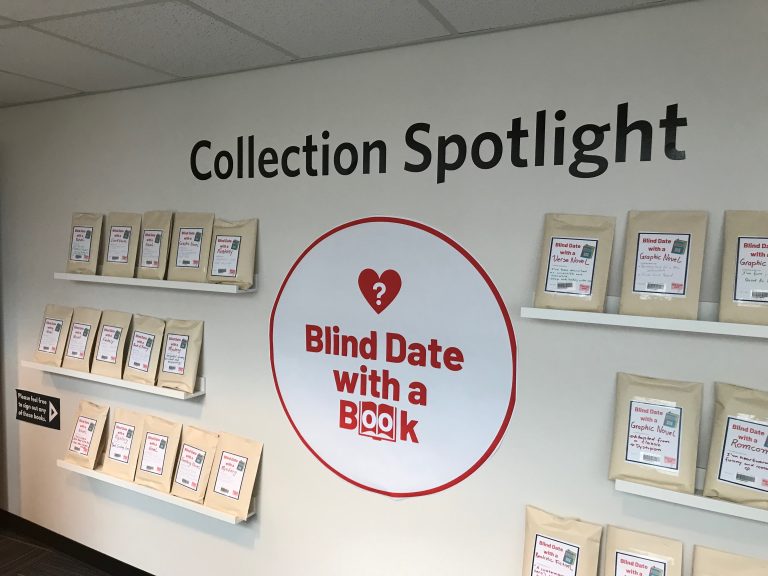Stay up to date on news, events and special features.
New Books at Education Library: March 2025
Discover the latest additions to our collection! This month’s new arrivals include a wide selection of children’s books and education resources to support teaching, learning, and literacy. Whether you’re exploring stories for young readers or searching for professional resources, there’s something for everyone.
Click on the book cover to visit the Google Books page for more details and previews. Clicking on the title will take you to the item’s UBC Library catalogue page to check availability or place a hold.
Happy reading!
BF323.L5 V467 2024 Are you listening? / by Susan Verde, illustrated by Juliana Perdomo.
BF723.I56 R43 2024 We need everyone / Michael Redhead Champagne ; illustrations, Tiff Bartel.
BF723.L64 F66 2024 Alone together : a curious exploration of loneliness / Petti Fong ; illustrated by Jonathan Dyck.
BF723.J6 K56 2024 Why children need joy / Ben Kingston-Hughes.
D768.155.C35 S25 2023 Shizue’s path / written by Mark Sakamoto ; illustrated by Rachel Wada.
E175.8 .H38 2024 Teaching beyond the timeline : engaging students in thematic history / China Harvey, Lisa Herzig.
FC106.B6 S22 2024 The kids book of Black history in Canada / written by Rosemary Sadlier ; illustrations by Arden Taylor.
GA105.6 .B35 2023 What a map can do / words by Gabrielle Balkan ; Art by Alberto Lot.
GT2850 .C54 2024 What do we eat? : how humans find, grow and share food / Megan Clendenan ; illustrated by Meegan Lim.
GV199.92.T3 Y37 2024 Up, up, ever up! : Junko Tabei : a life in the mountains / words by Anita Yasuda ; art by Yuko Shimizu.
HC79.C6 S55 2024 All consuming : shop smarter for the planet / Erin Silver ; illustrated by Suharu Ogawa.
HG221.5 .C48 2022 How to money : your ultimate visual guide to the basics of finance / Jean Chatzky, Kathryn Tuggle, and the HerMoney Team ; illustrated by Nina Cosford.
LB14.7 .L275 2024 An ecological pedagogy of joy : on relations, aliveness and love / Jodi Latremouille, Lesley Tait, David W. Jardine.
LB1072 .C73 2020 Creating social and emotional learning environments / Amy Cranston, Ed. D. ; forewords by Bryan Cranston and Michael Funk.
LB1575.5.U5 H43 2024 Awakening the heart : teaching poetry, K-8 / Georgia Heard ; foreword by Naomi Shihab Nye.
LB1576 .H23315 2023 A teacher’s guide to interactive writing grades, PreK-2 / Matt Halpern.
LB1631 .C85 2024 100-Word stories : a short form for expansive writing / Kim Culbertson with Grant Faulkner.
LB1632 .P79 2025 5 questions for any text : critical reading in the age of disinformation / Marylin Pryle.
LB2157.U5 S6574 2025 When you’re the new teacher : 28 strategies to align your good intentions with your teaching practices / Elizabeth Soslau, Ph.D.
LB2806 .S686 2024 Climate justice and the university : shaping a hopeful future for all / Jennie C. Stephens.
LB3430 .C65 2022 Learning from loss : a trauma-informed approach to supporting grieving students / Brittany R. Collins.
LC212 .A45 2024 Be an ally, not a bystander : teaching allyship lessons in primary schools / Frances Akinde.
LC212.42 .R334 2023 Race and social justice : building an inclusive college through awareness, advocacy and action / edited by Kendra Jason, PhD.
LC212.42 .B45 2024 Being Black in the ivory : truth-telling about racism in higher education / edited by Shardé M. Davis (Ph.D.).
LC3715 .R48 2017 Rethinking bilingual education : welcoming home languages in our classrooms / edited by Elizabeth Barbian, Grace Cornell Gonzales, and Pilar Mejia.
LC3715 .H66 2024 Growing language & literacy : strategies for secondary multilingual learners / Andrea Honigsfeld.
N8217.E28 R67 2024 Let’s get creative : art for a healthy planet / Jessica Rose ; illustrated by Jarett Sitter.
PZ7.L9673 Wm 2023 The Windeby puzzle : history and story / Lois Lowry.
PZ7.P3162 Hr 2024 The heart of a river / by Eileen Delehanty Pearkes ; illustrations by Nichola Lytle.
PZ7.N433835 Wh 2024 When the world tips over / Jandy Nelson.
PZ7.M682 Lt 2024 Little Shrew / Akiko Miyakoshi.
PZ7.1.J623 In 2023 Invisible son / Kim Johnson.
PZ7.1.U483 Al 2023 Always the almost : a novel / Edward Underhill.
PZ7.1.S47499 Aj 2023 Ajay and the Mumbai Sun / Varsha Shah.
PZ7.1.F66266 Wh 2023 Where you see yourself / Claire Forrest.
PZ7.1.G65334 Yy 2024 Yaya and the sea / written by Karen Good Marable ; illustrated by Tonya Engel.
PZ7.1.G5766 Ra 2024 A rainbow in brown / Pavonis Giron.
PZ7.1.B5787 Flo 2023 Flower girl / Amy Bloom ; illustrated by Jameela Wahlgren.
PZ7.1.C594723 Be 2023 Becoming a queen / Dan Clay.
PZ7.1.W5837 Wo 2023 Worm and Caterpillar are friends / written and illustrated by Kaz Windness.
PZ7.1.G87835 Iaak 2023 I kick and I fly / Ruchira Gupta.
PZ7.5.A72 So 2023 Something like home / Andrea Beatriz Arango.
PZ8.3.D6345 So 2024 Someone just like you / Helen Docherty & David Roberts.
PZ8.3.B3993 An 2024 Animal albums from A to Z.
QA11.2 .L46 2025 Math workshop, grades 6-12 : five steps to implementing a student-centered learning environment / Jennifer Lempp, Skip Tyler.
QA135.6 .L47 2017 Math workshop : five steps to implementing guided math, learning stations, reflection, and more / Jennifer Lempp ; foreword by Sherry Parrish.
QA135.6 .N495 2023 A teacher’s guide to math workshop / Dr. Nicki Newton, Dr. Alison J. Mello, Janet D. Nuzzie.
QC161.2 .R69 2022 L’air / recherche et conception, Joliane Roy ; illustrations, Marc Chouinard et Marthe Boisjoly.
QC903 .T43 2024 Teaching climate change and sustainability in the primary curriculum / edited by Karin Doull, Susan Ogier.
QH541.15.R45 W55 2024 Taking care of where we live : restoring ecosystems / Merrie-Ellen Wilcox ; illustrated by Amanda Key.
QH541.5.F6 G75 2021 Forest magic : a guidebook for little woodland explorers / words & art by Sarah Grindler.
QH541.5.F6 L43 2024 Mother aspen / words by Annette LeBox ; pictures by Crystal Smith.
QH545.R62 G35 2024 Wildlife crossing : giving animals the right-of-way / Joan Marie Galat.
QL751.5 .D47 2023 Think like a goat : the wildly smart ways animals communicate, cooperate and innovate / Lisa Deresti Betik ; [illustrations] Alexander Mostov.
QZ201 .H66 2024 Hope by Terry Fox / edited by Barbara Adhiya.
Reading at the Seed Library: Food Systems
Blog written by Rachael Huegerich
February 27, 2024
Where does our food come from? Food systems include all parts of the process, from growing to caring to sharing to eating. Check out related materials for children and teachers at the seed library display at the Education Library. You can find the seed library just past the reference desk—or learn more about UBC Library’s seed lending libraries here. Feel free to “borrow” some seeds, or some of the books on display now.
 The sockeye mother
The sockeye mother
By Hetxw’ms Gyetxw (Brett D. Huson) ; illustrated by Natasha Donovan
QL638.S2 H87 2017
To the Gitxsan people of Northwestern British Columbia, the sockeye salmon is more than just a source of food. Over its life cycle, it nourishes the very land and forests that the Skeena River runs through and where the Gitxsan make their home. The Sockeye Mother explores how the animals, water, soil, and seasons are all intertwined.
 To market, to market
To market, to market
By Nikki McClure
HD9005 .M173 2011
An introduction to the concept of and products found at a farmer’s market, including how some of the foods and other items are actually produced.
 Berry song
Berry song
By Michaela Goade
PZ7.1.G614 Be 2022
As a young Tlingit girl collects wild berries over the seasons, she sings with her Grandmother as she learns to speak to the land and listen when the land speaks back.
 Dumplings for Lili
Dumplings for Lili
By Melissa Iwai
PZ7.I9528 Du 2021
Lili loves to cook little dumplings called baos with her grandmother, but when cabbage is needed, Lili races up and down the stairs of her grandmother’s apartment building to find the ingredient and help the other grandmothers borrow ingredients for different dumplings, from Jamaican meat patties and Italian ravioli to Lebanese fatayer and more.
 Summer Supper
Summer Supper
By Rubin Pfeffer ; pictures by Mike Austin
PZ7.1.P5152 Sm 2018
Follow the creation of a family meal from the farm to the picnic table on a warm sunny day. Told entirely in words beginning with S, this lively book will help children appreciate where their food comes from.
 If you want to visit a sea garden
If you want to visit a sea garden
By Kay Weisman; illustrated by Roy Henry Vickers
SH373 .W45 2020
A non-fiction picture book about sea gardens, also known as clam gardens, which have been found all along the Pacific northwest coast. Some of them are at least 2000 years old. Created by Indigenous peoples to provide a reliable food source, a number of these gardens are being restored today.
 Let’s eat!: sustainable food for a hungry planet
Let’s eat!: sustainable food for a hungry planet
By Kimberley Veness
S494.5.S86 V464 2017
Let’s Eat uncovers the secret lives of our groceries, exploring alternative–and sometimes bizarre–farm technology and touring gardens up high on corporate rooftops and down low in military-style bunkers beneath city streets. Packed with interesting and sometimes startling facts on agriculture around the world, Let’s Eat reveals everything from the size of the biggest farm in the world to how many pesticides are in a single grape to which insect people prefer to eat.
 Eat up!: an infographic exploration of food
Eat up!: an infographic exploration of food
By Antonia Banyard & Paula Ayer; art by Belle Wuthrich
TX355 .B36 2017
Written for middle-grade readers, Eat Up! is a colorful infographic look at the many surprising and fascinating facts about food.
Collection Spotlight: Freedom to Read Week (February 23 – March 1, 2025)
In celebration of Freedom to Read Week (Feb 23–Mar 1), we highlight selections from the Education Library’s collection that have faced challenges, or even bans, in Canada. You may be surprised by some of these titles and the reasons they were contested. Share these books with your class to spark discussion on why they may have been challenged.
For a more comprehensive list of challenged books in Canada, here is a comprehensive list. Also, check out our Children’s & Young Adult Literature LibGuide, which includes a subsection on Freedom to Read Week.
Picture Books
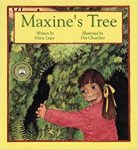 Maxine’s Tree by Diane Leger – In 1992, an official of the woodworkers’ trade union asked for the removal of this children’s book from elementary school libraries in Sechelt, B.C. He said the book promoted an anti-logging viewpoint. The school board rejected his request.
Maxine’s Tree by Diane Leger – In 1992, an official of the woodworkers’ trade union asked for the removal of this children’s book from elementary school libraries in Sechelt, B.C. He said the book promoted an anti-logging viewpoint. The school board rejected his request.
.
.
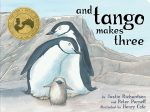 And Tango Makes Three by Justin Richardson and Peter Parnell – In 2006, a parent complained to the Calgary Catholic School District about this children’s picture book. The book is about two male penguins raising a baby penguin in a zoo. The parent objected to the theme of homosexual parenting on religious grounds. After having the book reviewed by the office of the Religious Education Department, the library removed the book.
And Tango Makes Three by Justin Richardson and Peter Parnell – In 2006, a parent complained to the Calgary Catholic School District about this children’s picture book. The book is about two male penguins raising a baby penguin in a zoo. The parent objected to the theme of homosexual parenting on religious grounds. After having the book reviewed by the office of the Religious Education Department, the library removed the book.
.
 Asha’s Mums by Rosamund Elwin & Michele Paulse – In 1997, this children’s story and others like it were banned in Surrey, due to the fact that they positively depicted same-sex parenting. A teacher, James Chamberlain, challenged the ban in court. By 2002, the Supreme Court of Canada declared that BC’s School Act required non-discriminatory education. The ban on books containing same-sex parents could not be legally justified.
Asha’s Mums by Rosamund Elwin & Michele Paulse – In 1997, this children’s story and others like it were banned in Surrey, due to the fact that they positively depicted same-sex parenting. A teacher, James Chamberlain, challenged the ban in court. By 2002, the Supreme Court of Canada declared that BC’s School Act required non-discriminatory education. The ban on books containing same-sex parents could not be legally justified.
.
.
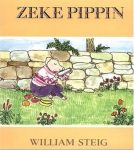 Zeke Pippin by William Steig – In 2015, a British Columbia public library had a patron challenge this humorous children’s book. The patron claimed that it “depicted violence and was age inappropriate” and ordered for it to be removed. The library retained the book in its collection. The book, written in 1994, tells the story of a pig named Zeke who discovers a magic harmonica, and uses its hypnosis powers to get out of multiple life-threatening situations.
Zeke Pippin by William Steig – In 2015, a British Columbia public library had a patron challenge this humorous children’s book. The patron claimed that it “depicted violence and was age inappropriate” and ordered for it to be removed. The library retained the book in its collection. The book, written in 1994, tells the story of a pig named Zeke who discovers a magic harmonica, and uses its hypnosis powers to get out of multiple life-threatening situations.
.
.
Children’s Literature
 How Do You Spell Abducted? by Cherylyn Stacey – In 1996, Alberta MLA Julius Yankowksi called for this book to be banned after reading a negative review by Michael Coren, a Toronto journalist. Coren claimed the novel was “hate literature against men” and the two men called for grants to be withdrawn for the publisher, Red Deer Press. The story, aimed for ages 10-12, is an account of the abduction of 3 children by their estranged father. By 1999, the novel had sold 12,000 copies.
How Do You Spell Abducted? by Cherylyn Stacey – In 1996, Alberta MLA Julius Yankowksi called for this book to be banned after reading a negative review by Michael Coren, a Toronto journalist. Coren claimed the novel was “hate literature against men” and the two men called for grants to be withdrawn for the publisher, Red Deer Press. The story, aimed for ages 10-12, is an account of the abduction of 3 children by their estranged father. By 1999, the novel had sold 12,000 copies.
.
.
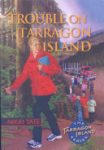 Trouble on Tarragon Island by Nikki Tate – In 2007, a librarian at the Elizabeth School in Kindersley, SK withdrew this children’s novel from the library’s shelves. In the novel, a girl’s grandmother joins an anti-logging group and poses semi-nude for a calendar. Several boys taunt the girl about her grandmother’s breasts, calling them “bazoongas.” The librarian objected to the bullying scene and to the word “bazoongas.” The decision to withdraw the book was ultimately reversed.
Trouble on Tarragon Island by Nikki Tate – In 2007, a librarian at the Elizabeth School in Kindersley, SK withdrew this children’s novel from the library’s shelves. In the novel, a girl’s grandmother joins an anti-logging group and poses semi-nude for a calendar. Several boys taunt the girl about her grandmother’s breasts, calling them “bazoongas.” The librarian objected to the bullying scene and to the word “bazoongas.” The decision to withdraw the book was ultimately reversed.
.
.
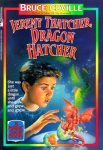 Jeremy Thatcher, Dragon Hatcher by Bruce Coville – In 1993, A parent group from Leeds-Grenville County, ON, wanted this book removed from a school library because it hinted at occultism and “New Age religion.” A review committee was set up and the book remained in place. The Harry Potter series has also been challenged in Canada for similar reasons.
Jeremy Thatcher, Dragon Hatcher by Bruce Coville – In 1993, A parent group from Leeds-Grenville County, ON, wanted this book removed from a school library because it hinted at occultism and “New Age religion.” A review committee was set up and the book remained in place. The Harry Potter series has also been challenged in Canada for similar reasons.
.
.
Young Adult Books
 The Little Black Book for Girlz by St. Stephen’s House – In 2006, this sex education book for teen girls was challenged by the Institute for Canadian Values (ICV), a Christian organization. The ICV urged people to write to Stephen Harper so that public funding for this and other sex ed books were dropped. According to the ICV, the book, which is written by teen girls for teen girls, “encourages lesbianism, describes lesbian sex, contains obscene language and provides misleading information about safe sex.”
The Little Black Book for Girlz by St. Stephen’s House – In 2006, this sex education book for teen girls was challenged by the Institute for Canadian Values (ICV), a Christian organization. The ICV urged people to write to Stephen Harper so that public funding for this and other sex ed books were dropped. According to the ICV, the book, which is written by teen girls for teen girls, “encourages lesbianism, describes lesbian sex, contains obscene language and provides misleading information about safe sex.”
.
.
 Go Ask Alice by Anonymous – In 1978, Richmond and Langley school boards removed this book about a teen drug addict from their high schools. Richmond students petitioned to protest the ban, and were supported by the Richmond Teacher-Librarians’ Association. A committee of school trustees in Langley recommended the book stay in counsellors’ offices. However, these efforts failed and the bans stayed in effect.
Go Ask Alice by Anonymous – In 1978, Richmond and Langley school boards removed this book about a teen drug addict from their high schools. Richmond students petitioned to protest the ban, and were supported by the Richmond Teacher-Librarians’ Association. A committee of school trustees in Langley recommended the book stay in counsellors’ offices. However, these efforts failed and the bans stayed in effect.
.
.
 When Everything Feels Like the Movies by Raziel Reid – This book, about a genderqueer teenager’s struggles with school and relationships, received the Governor General’s Award for Children’s Literature in 2014. The book was immediately challenged and called a “values-void novel” by a National Post columnist. Soon after, a group of “concerned” parents, YA authors, teachers and others started an online petition to revoke the award, citing the book’s “offensive” and “inappropriate” content. However, the award was not rebuked and the petition was rejected.
When Everything Feels Like the Movies by Raziel Reid – This book, about a genderqueer teenager’s struggles with school and relationships, received the Governor General’s Award for Children’s Literature in 2014. The book was immediately challenged and called a “values-void novel” by a National Post columnist. Soon after, a group of “concerned” parents, YA authors, teachers and others started an online petition to revoke the award, citing the book’s “offensive” and “inappropriate” content. However, the award was not rebuked and the petition was rejected.
.
.
 This One Summer by Mariko and Jillian Tamaki – This graphic novel became the most challenged book of 2016 due to its inclusion of LGBT characters, drug use and profanity, and other mature and sexual themes. The story is about the summer vacation of two girls, one of whom has lesbian parents. One of the background characters, a teenager, becomes pregnant.
This One Summer by Mariko and Jillian Tamaki – This graphic novel became the most challenged book of 2016 due to its inclusion of LGBT characters, drug use and profanity, and other mature and sexual themes. The story is about the summer vacation of two girls, one of whom has lesbian parents. One of the background characters, a teenager, becomes pregnant.
.
.
Reading at the Seed Library: Community Science
Blog written by Rachael Huegerich
February 10, 2024
Anyone can be a scientist, and the garden is a fantastic place for it!
One way to get started is by joining a community science (sometimes called citizen science) project, where lots of people help collect and analyze data from where they live. After all, some questions are way too big for one scientist to ask on their own. One fun British Columbia project (now Canada-wide) is Butterflies in My Backyard (BIMBY), from the David Suzuki Foundation, which involves taking photos of butterflies you find near home. Projects like these allow folks to learn together and, in this case, support butterfly conservation.
Check out related materials for children and teachers at the seed library display at the Education Library. You can find the seed library just past the reference desk—or learn more about UBC Library’s seed lending libraries here. Feel free to “borrow” some seeds, or some of the books on display now.
Here are a few books with community science activities inside.
 Citizen scientists: be a part of scientific discovery from your own backyard
Citizen scientists: be a part of scientific discovery from your own backyard
Written by Loree Griffin Burns; photographs by Ellen Harasimowicz
QL51 .B87 2012
Anyone can get involved in gathering data for ongoing, actual scientific studies such as the Audubon Bird Count and FrogWatch USA. Just get out into a field, urban park, or your own backyard.
You can put your nose to a monarch pupa or listen for raucous frog calls. You can tally woodpeckers or sweep the grass for ladybugs. This book, full of engaging photos and useful tips, will show you how.
 Chasing bats and tracking rats: urban ecology, community science, and how we share our cities
Chasing bats and tracking rats: urban ecology, community science, and how we share our cities
Written by Cylita Guy; illustrations by Cornelia Li
QH541.5.C6 G89 2021
What can city bees tell us about climate change?
How are we changing coyote behavior?
And what the heck is a science bike?
Featuring the work of a diverse group of eleven scientists–herself included!–Dr. Cylita Guy shows how studying urban wildlife can help us make cities around the world healthier for all of their inhabitants.
 Bird’s-eye view: keeping wild birds in flight
Bird’s-eye view: keeping wild birds in flight
By Ann Eriksson
QL676.5 .E75 2020
Birds contribute to the health of the planet and provide pleasure for millions of people, but wild birds are in trouble.
Bird’s-Eye View looks at why wild birds are important, why they need help and what young people all over the world are doing and can do to give wild birds a boost.
 Our world out of balance: understanding climate change and what we can do
Our world out of balance: understanding climate change and what we can do
Written by Andrea Minoglio; illustrated by Laura Fanelli; translated by Emma Mandley
QC903.15 .M55 2021
This accessible guide for children details how humans have thrown the planet off-balance and ways we can work to create a healthier world. Encouraging and easily digestible, this illustrated nonfiction guide introduces children ages eight to twelve to the important topic of climate change with tips on “How You Can Help” and citizen scientist activities.
Collection Spotlight: Blind Date with a Book (February 3-14)
Blind Date with a Book – A UBC Education Library Spotlight Event
You’ve heard the saying, “Don’t judge a book by its cover.” Now’s your chance to put it to the test!
Join us for Blind Date with a Book, a fun and mysterious event where you’ll discover a surprise read based on just a few intriguing clues. Each book is completely wrapped, with only a short description to guide your choice. Will you be drawn to a thrilling mystery, a heartfelt short story, or an inspiring poetry collection? The decision is yours—without actually seeing the book!
Take a chance, pick a wrapped title, and bring home a literary surprise. You never know—you might just find a new favourite!
📅 February 3-14, 2025
📍 UBC Education Library
Come explore, take a risk, and discover something new!


